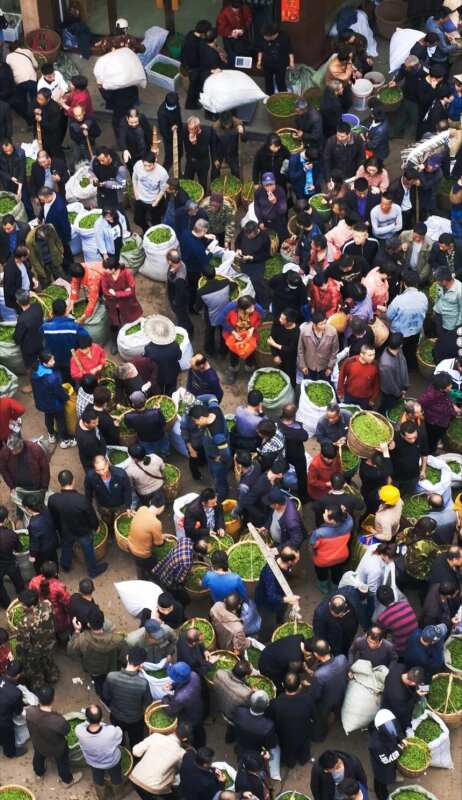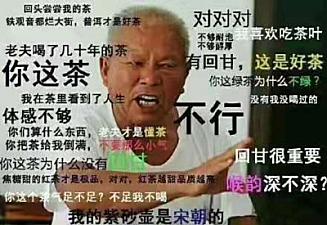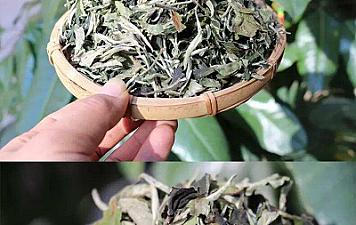
Are China's teas doomed?
September 14, 2025
The question was asked by a leader: Do Chinese tea industry's "many, small, scattered and low" industries have any rescue power? After thinking about it, this article has been written. In the segments of planting, production, processing and circulation of tea leaves, the number of various types of tea enterprises and brands is numerous, but their scales are small and scattered, with a low level of industrial concentration. For example, there are more than 5,800 tea enterprises in Nanping City, which is an important tea-producing city.

Some leaders asked whether China's tea industry, which is "small, scattered and low-level", has any room to recover. After some thought, I wrote this article.
In the various links of tea planting, production, processing and circulation, there are many types of enterprises and brands in Fujian Province, but their scale is small and scattered. For example, a certain county in Nanping City has over 5,800 tea businesses, among which small workshops accounted for as high as 91.67%, while those above the scale accounted for a small proportion.
The current situation of tea enterprises and brands in China is that they are "small, scattered, low-quality and inefficient", which is an inevitable result of the country's tea agricultural economy not adapting to the requirements of industrial economic development. Currently, speeding up the development of digital economy not only gives tea development a chance to achieve leapfrog development through digital technology empowerment, but also: According to reports from news media, under the deployment of Fujian Provincial Committee and Provincial Government, led by Provincial Commerce Department, provincial big data group and provincial supply and marketing cooperative have invested in establishing and operating China's first national comprehensive service platform for tea industry - Futea.com.
To fully realize that this is the core foundation project for China's future tea industry development.
Many government departments are involved in supporting the development of the tea industry (statistics, agriculture, forestry, tourism and culture, industrial and information technology, commerce, market supervision, planning and finance, price control, taxation, education, etc.). Government agencies face a "tea leaf": from statistics, tea is "tea leaves"; from agriculture (including agricultural marketing), tea is "agricultural products" or "by-products of agricultural products"; from forestry, tea is "forest economic product (dendrological)"; from tourism and culture, tea is "tourism and cultural creative products"; from industrial and information technology, tea is a "digital product"; commercially, tea is "food and commodities"; from market supervision, tea is "food and consumer goods"; from the development and reform commission, tea is neither an "important commodity for people's livelihood" (commodities for people's livelihood: grains, oils, meat, eggs, vegetables, fruits, milk, etc.) nor a "major commodity" (major commodities: iron ore, copper, crude oil, natural gas, corn, soybeans, edible oil, etc.); from price control, tea is not an "object of purchase price support policy" (commodities subject to purchase price support policies: grains, vegetables, live pigs, etc. agricultural products); from taxation, tea is "primary tea (primary agricultural product)" or "processed tea"; and from education, tea can be used as a teaching tool ("teaching through tea"). The government has only relied on joint statements to address the problems of the tea industry's "smallness", "dispersion", "lack of visibility" and "low level".
To comprehensively study the role of China's six "invisible hands" in playing out the core foundation projects of the Chinese tea industry.
The organization pooled the strength of cross-industry experts and policy-making departmental experts, who conducted in-depth research on policies such as matching, effectiveness and intensity to formulate policies for the comprehensive service platform that supports China's tea industry. In doing so, it enabled the platform to play its role as "six hands", including promoting the development of the tea industry with government promotion; sticking together and influencing members through association between the two; acting on branding in the tea industry as a representative; pushing forward marketing circulation optimization as an agent; gathering tax collection sources for tea as a gatherer; assisting farmers to increase income and promote tea consumption.
To make a big effort in building and utilizing well China's core tea industry foundation projects.
China's tea industry comprehensive service platform, not only to accelerate the digital transformation of industries and industrial digitization, but also to play the role of "six hands", must maintain the spirit of "breakthrough" and the momentum of innovation. It is necessary to continue to adhere to China's core projects and key components of tea industry comprehensive service platform owned by state investment. Implementing a special fiscal funding each year, still want to increase the input registered capital, and introduced state-owned dominated industrial leading fund support. At the same time, it also wants to avoid adopting general state-owned enterprises evaluation methods.
Actually, China's tea industry has been rescued from "small, scattered and low."







